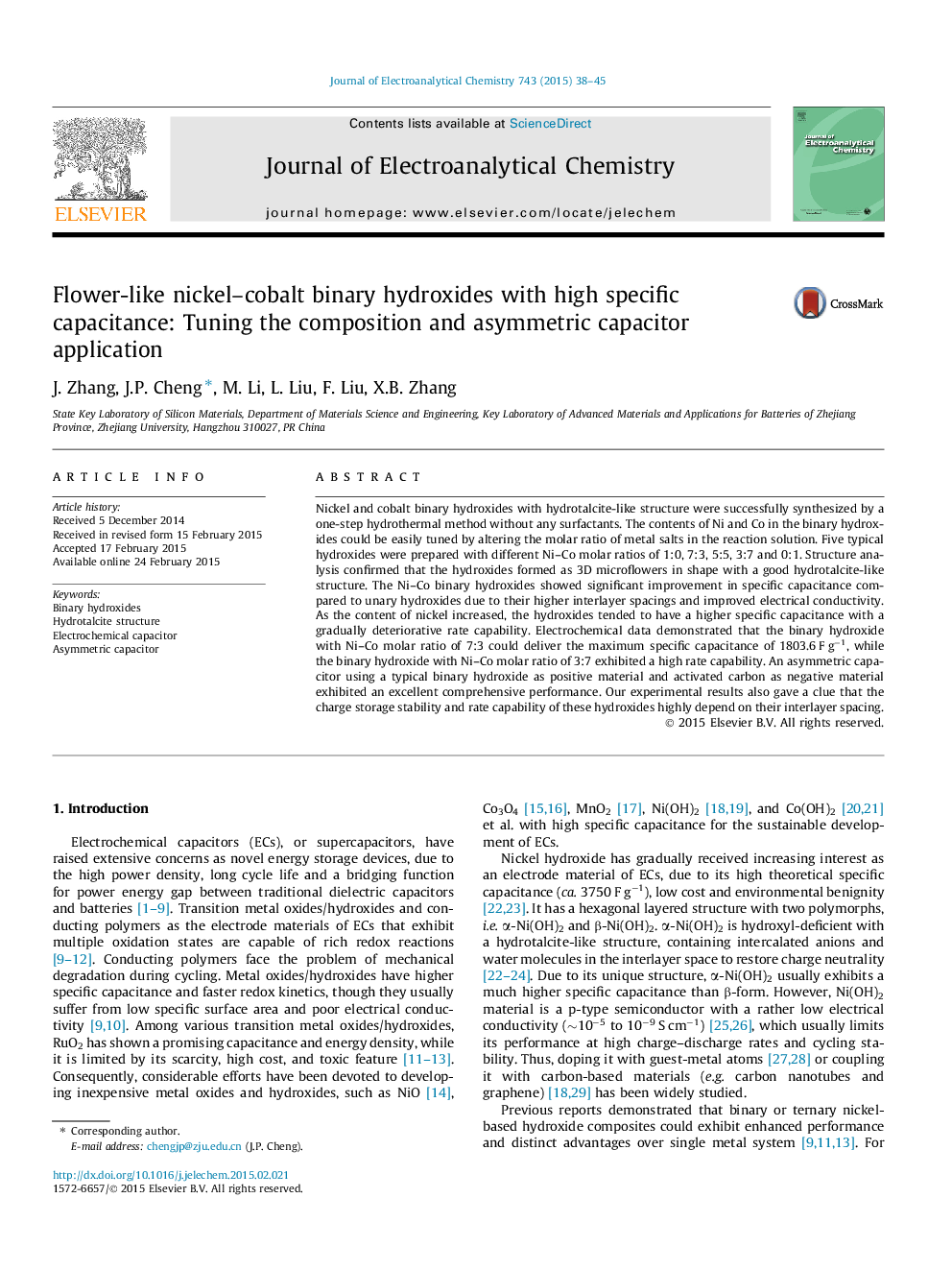| کد مقاله | کد نشریه | سال انتشار | مقاله انگلیسی | نسخه تمام متن |
|---|---|---|---|---|
| 218408 | 463199 | 2015 | 8 صفحه PDF | دانلود رایگان |
• Ni–Co binary hydroxides with hydrotalcite-like structure are synthesized by hydrothermal method.
• The contents of Ni and Co in the binary hydroxides can be easily tuned.
• With Ni increase, the hydroxides have a higher capacitance with a deteriorative rate capability.
Nickel and cobalt binary hydroxides with hydrotalcite-like structure were successfully synthesized by a one-step hydrothermal method without any surfactants. The contents of Ni and Co in the binary hydroxides could be easily tuned by altering the molar ratio of metal salts in the reaction solution. Five typical hydroxides were prepared with different Ni–Co molar ratios of 1:0, 7:3, 5:5, 3:7 and 0:1. Structure analysis confirmed that the hydroxides formed as 3D microflowers in shape with a good hydrotalcite-like structure. The Ni–Co binary hydroxides showed significant improvement in specific capacitance compared to unary hydroxides due to their higher interlayer spacings and improved electrical conductivity. As the content of nickel increased, the hydroxides tended to have a higher specific capacitance with a gradually deteriorative rate capability. Electrochemical data demonstrated that the binary hydroxide with Ni–Co molar ratio of 7:3 could deliver the maximum specific capacitance of 1803.6 F g−1, while the binary hydroxide with Ni–Co molar ratio of 3:7 exhibited a high rate capability. An asymmetric capacitor using a typical binary hydroxide as positive material and activated carbon as negative material exhibited an excellent comprehensive performance. Our experimental results also gave a clue that the charge storage stability and rate capability of these hydroxides highly depend on their interlayer spacing.
SEM and EDS mappings of a typical flower-like Ni–Co binary hydroxide particle.Figure optionsDownload as PowerPoint slide
Journal: Journal of Electroanalytical Chemistry - Volume 743, 15 April 2015, Pages 38–45
